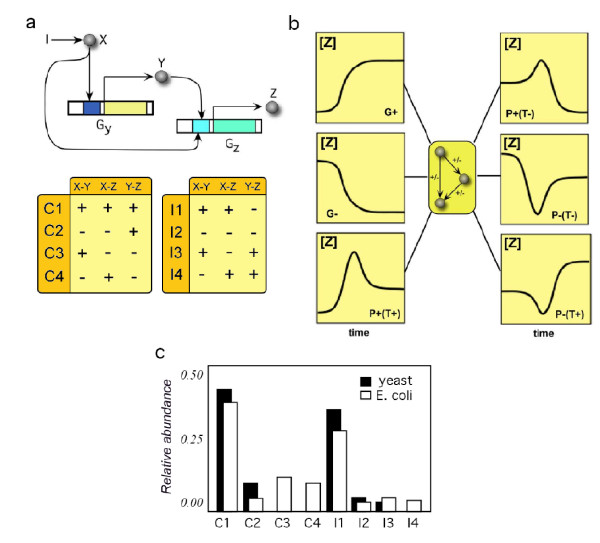Figure 1.
Structure and frequency of FFL motifs. In (a) we show the schematic representation of the FFL's genetic regulatory interactions ('+' represents activatory regulation and '-' represents inhibitory regulation). The external input I activates the signal protein X. Active X modulates expression of gene GZ directly and indirectly via regulation of Y expression, which in turn also regulates GZ. The dynamics of these regulatory interactions is described by a set of equations dy/dt = F(y, z), dz/dt = G(y, z) incorporating the nonlinearities associated to gene-gene interactions. In (b) we plot the general topology of FFL motifs and the six different functions ϕ(t) represented by qualitative time-courses [Z(t)]. 'G' indicates grader dynamics, 'P' pulser dynamics. We specifically take into account the initial slope of the time-course ('+' or '-') and the concentration of the final target Z with respect to the non-induced protein concentration ('T+' and 'T-'). In (c) we display the relative abundance Pobs(Γi) of these motifs in the transcription networks of yeast and E. coli (data from [27]).

